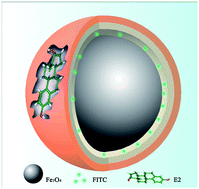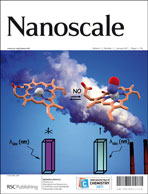In this study, we present a general protocol for the making of surface-imprinted magnetic fluorescence beads via reversible addition-fragmentation chain transfer polymerization. The resulting composites were characterized by X-ray diffraction analysis, transmission electron microscopy, scanning electron microscopy, fluorescence spectroscopy, Fourier transform infrared spectroscopy, and energy dispersive spectroscopy. The as-synthesized beads exhibited homogeneous polymer films (thickness of about 5.7 nm), spherical shape, high fluorescence intensity and magnetic property (Magnetization (Ms) = 3.67 emu g−1). The hybrids bind the original template 17β-estradiol with an appreciable selectivity over structurally related compounds. In addition, the resulting hybrids performed without obvious deterioration after five repeated cycles. This study therefore demonstrates the potential of molecularly imprinted polymers for the recognition and separation of endocrine disrupting chemicals.
You have access to this article
 Please wait while we load your content...
Something went wrong. Try again?
Please wait while we load your content...
Something went wrong. Try again?


 Please wait while we load your content...
Please wait while we load your content...